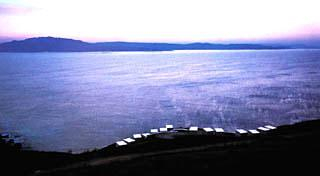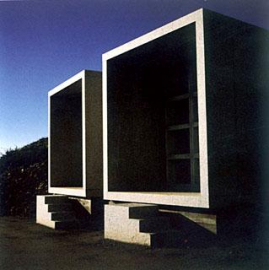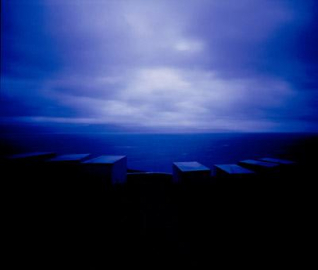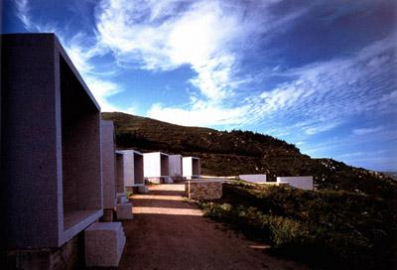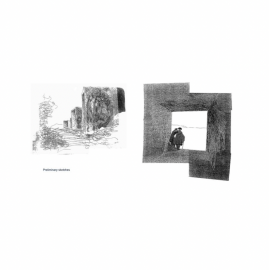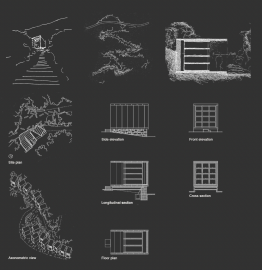Fisterra Cemetery
When I designed and built the Finisterre Cemetery, the first thing I wanted to do was to give the dead the rest they deserve in a sublime place where architecture could merge positively with nature, as the land, sea and sky have done in the same place since time immemorial.
Cape Finisterre requires a form of architecture that constitutes an extension of the landscape, that dissolves silently into nature, almost as if it did not exist. How might one meet these architectural conditions when planning a cemetery for the site?
The brief called for a cemetery of small structures clustered along an existing road that follows the hillside, with no enclosures of any kind and the sea as a permanent background. This departure from enclosures and the elimination of borders and walls meant exclusion of customary references to a particular space. We decided to overcome this difficulty by making use of other references and by establishing other limits, specifically, those that marked ancient Celtic burial grounds: the sea, the river, the mountain and the sky.
The image of the cemetery is that of a pathway through a cluster of houses, a snake that slithers down the mountainside to the sea, adapting its route to the abrupt variations of the terrain. Along its way the graves, large drawers recessed in massive, geometric blocks, suggest the enormous granitic forms scattered over the flanks of the ancient hills, some of which come to rest at the bottom of the slope, where the land is flat. In the meantime others, more venturesome, roll on, overcoming the irregularities of the terrain to plunge over the cliff, where they remain forever, their forms chiselled by the implacable wind and waves.
The project imitates the way nature produces its architecture, but also reflects the form in which the inhabitants of the land have produced theirs.
As we approach these stones, we realise they are places made by human beings. Blocks imbued with geometry, intentional forms that are nevertheless arranged in apparent disorder.
Just as the lone palm tree is capable of responding to the grandeur of the desert; just as the sail of a boat, however small, responds to the vastness of the ocean; and just as a burst of fragrance responds to the evening and renders it enchanted, with this project I wanted to respond to cultural, anthropological and spiritual concerns and to all humanity, so heedlessly moving towards a globalised society. I wanted to respond to this one-track thinking which, on the pretext of overcoming isolation and backwardness, destroys the diversity, complexity and identity of each group or individual, rendering us all not citizens of the world but global villagers; voracious consumers of a multinational market, and conditioning and destroying feelings, philosophy, science and art, everything that shows how rich, deep and marvellous people and life in general can be.
I wanted to finally prove that there is hope, that it is always possible to react to the system and to respond to it with any project, in any place, even if, as in this case, it is a place as remote as Finisterre and a work as insignificant as this cemetery.

